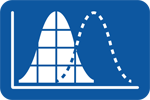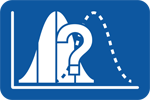Hypothesis Testing: Module Post-Test
In this module we will focus on the traditional null hypothesis testing model that has evolved out of positions developed by Fisher and Neymann and Pearson. The null hypothesis is in most instances the assumption that nothing beyond chance is happening. Our experimental hypothesis is that something is happening that is different from chance.
Null hypothesis testing can be summarized by the following steps. First, develop a research hypothesis (what you actually expect to happen). Second, design the research project and collect appropriate data. Third, state the relevant null hypothesis. Fourth, construct the appropriate sampling distribution for evaluating the observed difference or association. Fifth, reject or fail to reject the null hypothesis. Sixth, draw a conclusion consistent with rejecting or failing to reject the null hypothesis.
If we have rejected the null hypothesis we may conclude that there is evidence supporting the experimental hypothesis but this does not mean we disproved the null hypothesis, or proven the experimental hypothesis.
- Appreciate the distinction between the null hypothesis and the experimental or alternate hypothesis
- Understand the difference between a Type I error and a Type II error
- Demonstrate an ability to manipulate the factors that influence statistical power and the Type II error rate





